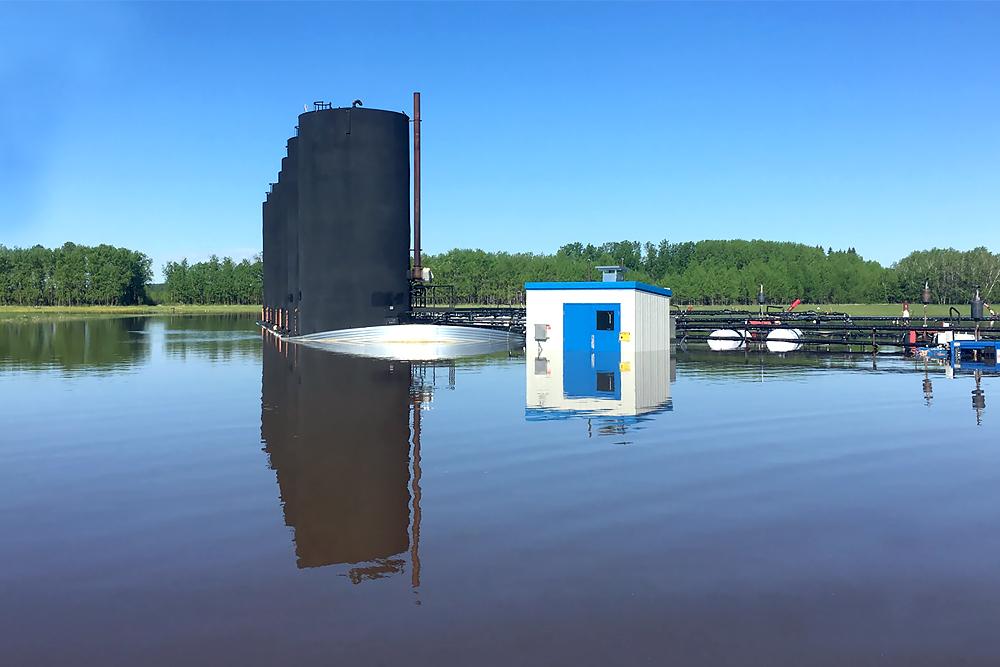June rainfall across Alberta was heavier than usual, leaving communities soaking wet and, in a few unfortunate cases, flooded in. Northeast Alberta was one of several areas of the province that experienced significant flooding and other weather-related damage.
As residents winced at the skies, praying that their homes and cars would be spared, many oil and gas companies were doing the same.
“I’ve never seen anything like it, and I’ve lived here for 19 years,” says Glen Wolfe, Bonnyville Regional Coordinator for the Alberta Energy Regulator (AER), when asked about the rainfall’s impact on his area and nearby oil and gas sites.
In Bonnyville, heavy oil sites north of the town were flooded; in Lac la Biche, floodwaters washed out railway tracks and caused road closures; and in Fort McMurray, main roads were eroded, limiting access to and from oil and gas sites.
The floods were caused by rising water levels in many rivers, including the Beaver River, which runs between Saskatchewan and Alberta and is located east of the Athabasca River. Water flowed fast and high as it made its way to homes, businesses, and oil and gas sites in the region.

A Response That Counts
Oil and gas companies faced with a flood or other disaster must be able to quickly and safely suspend operations and evacuate. They must also report any damage to the AER; inspectors will support the company’s response and help to identify any impacts to, or near, the site.
“When a big storm hits that no one was expecting, we’ll often receive calls from companies informing us that their site has been flooded due to heavy rainfall or an overflow from river banks,” Wolfe says. “We’ll go over what actions they’ve taken so far, and attempt to access the site to complete an assessment and reduce any risks to the environment.”
If a member of the public sees something suspicious or abnormal on an oil and gas site, they’re encouraged to contact the AER’s 24-hour emergency response line or inform the operator by calling the emergency phone number listed on the site’s identification sign.
When There’s Time to Prepare
If a torrential downpour is in the forecast, Wolfe explains that there are many preventative measures that companies can take to prepare for an incoming storm.
“Companies should visit their sites ahead of time—while they’re still accessible—to shut in and suspend their wells, empty storage tanks, and ensure berms and barriers are in place to limit potential impacts from flooding,” he says.
“From a general housekeeping standpoint, they should keep their site clean and remove any debris that could pose a safety or environmental risk.”
Under the Oil and Gas Conservation Rules, if a well or facility is located closer than 100 metres to the normal highwater mark of a body of water or permanent stream, measures must be in place to ensure that a potential release will not enter a water body.
While individual operators are responsible for making sure they protect their infrastructure from flooding, the AER works with industry to ensure that appropriate prevention and planning happen. For example, the AER requires companies to have emergency response plans in place to address potential hazards that could impact operations, the environment, or the public’s safety.
We can’t stop a flood or other disaster from striking, but having the right plan in place and taking preventative action is in everyone’s best interest.

